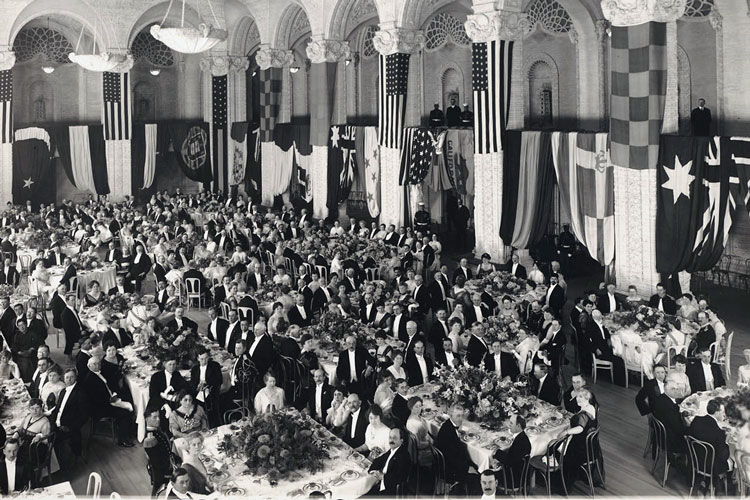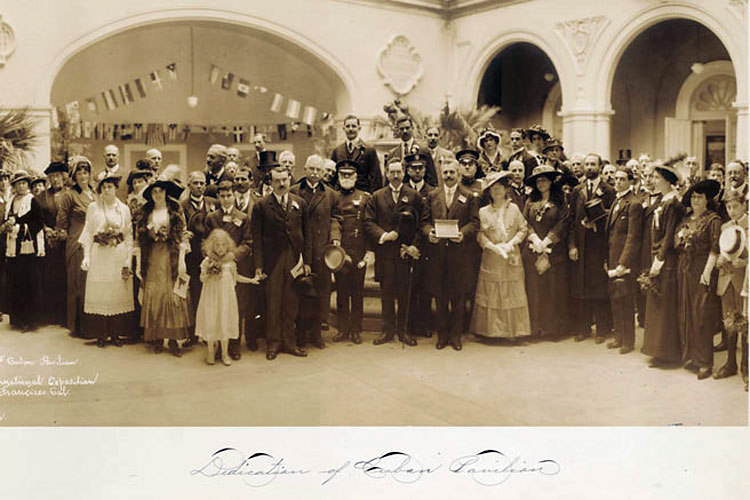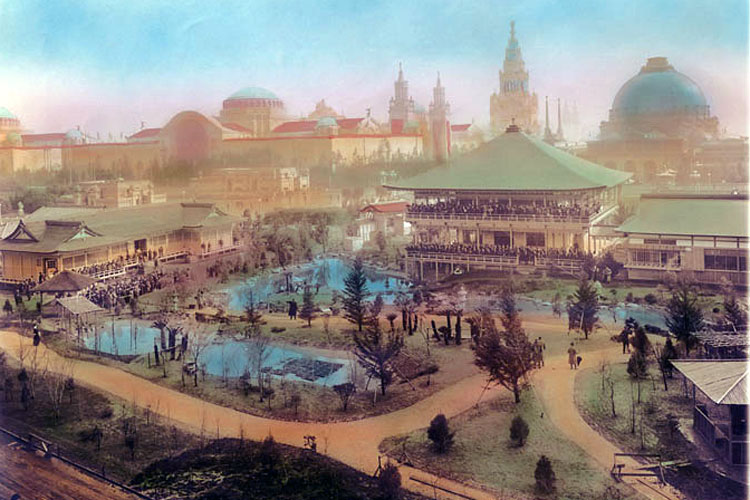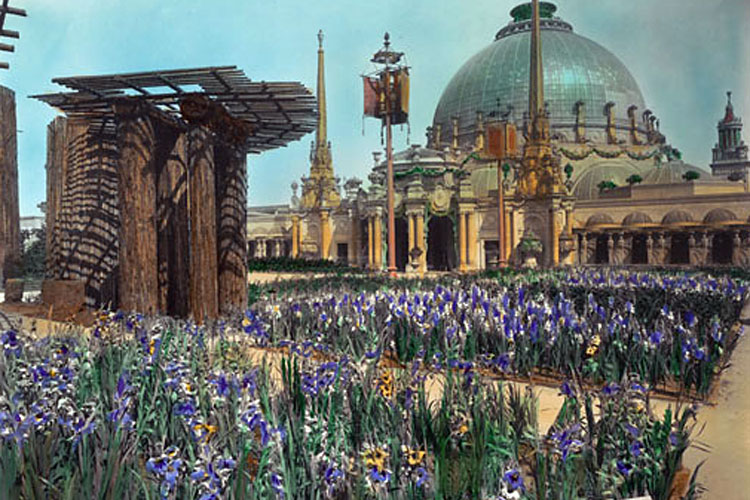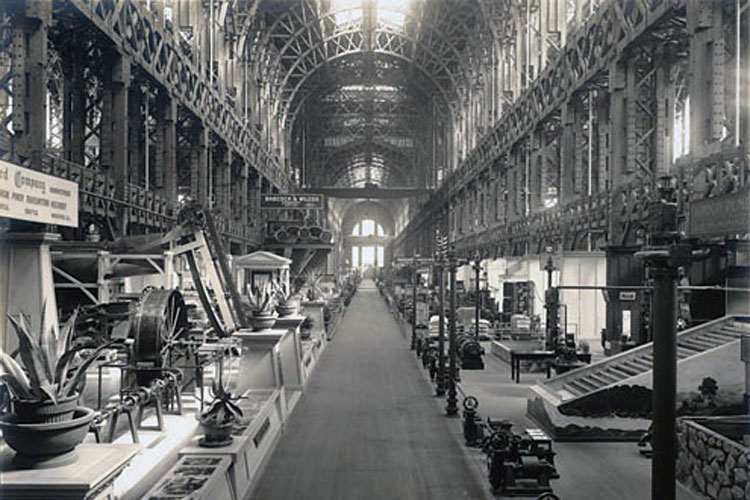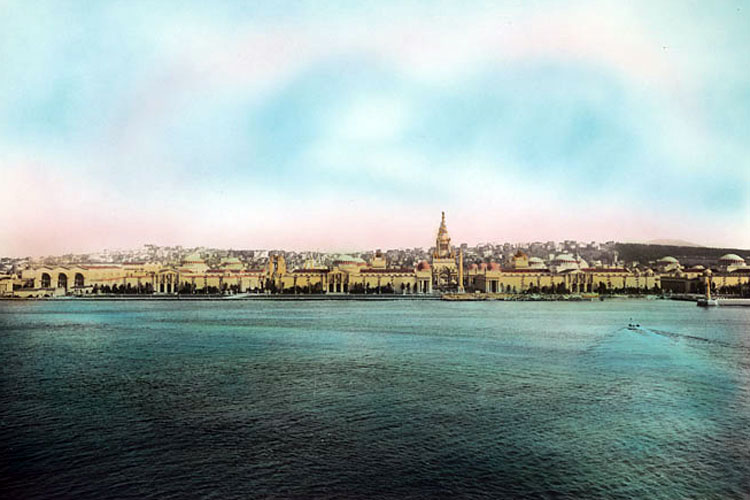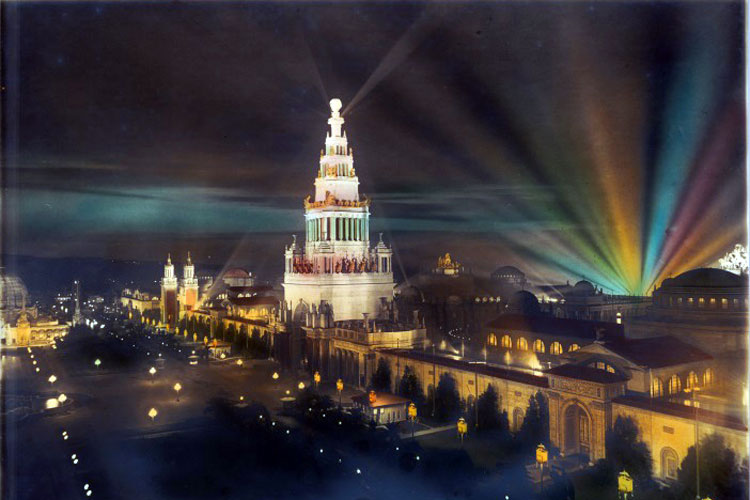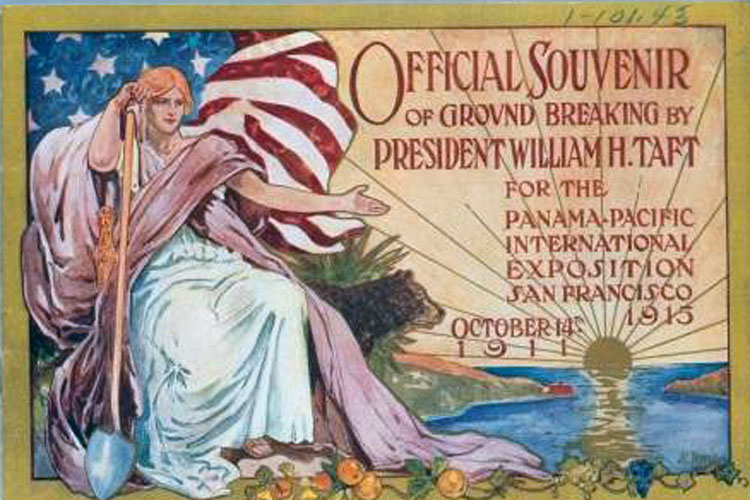Bancroft exhibit shows off Panama-Pacific collections
History, art, engineering, botany, politics and culture from the extravagant 1915 World's Fair are all on display at Bancroft exhibit, The Grandeur of a Great Labor.

October 15, 2015
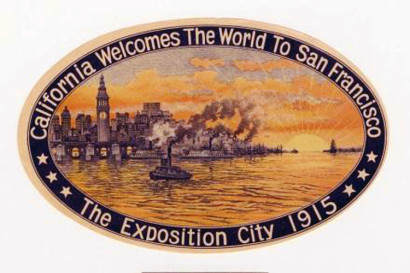
“California Welcomes the World to San Francisco: The Exposition City 1915,” reads this trunk tag in the Bancroft’s PPIE ephemera collection. Additional images are in a slideshow below.
UC Berkeley’s Bancroft Library is home to the official records of the 1915 World’s Fair in San Francisco, and to a Western Americana Collection that dips well into Latin America, so hosting an exhibit of Bancroft collections pertaining to the Panama-Pacific International Exhibition makes perfect sense.
Some 19 million visitors were drawn to the PPIE by its specially designed palaces, fountains and gardens sprawling over 635 acres of filled mudflats in a city literally rising from the ashes of the 1906 earthquake and fire. Although the fair was billed as a salute to the Panama Canal, a technological marvel of the day that linked the Atlantic and Pacific oceans, it also clearly underscored San Francisco’s central role in global trade, which soared after the canal’s 1914 opening.
“The Grandeur of a Great Labor: The Building of the Panama Canal and the PPIE” opens Tuesday, Oct. 20, in the Bancroft Library Gallery, located near the center of campus, just northwest of the Campanile. The exhibit is free and open to the public. Hours are 10 a.m.- 4 p.m. Monday through Friday. A map of the campus is online.
From start to finish
Exhibit co-curators Theresa Salazar and Teresa Mora foraged for display items among hundreds of cartons of carefully archived records and photographs at the Bancroft relating to both the fair and the Panama Canal.
“The exhibit shows the building of the fair from start to finish — the campaign to get the fair, the selection of the site, the construction of the fair, the workers who contributed to its realization and the final, glorious product,” said Salazar. Another component of the exhibition concentrates on technological advances, including the celebration of the American inventor, Thomas Edison, and the innovative nighttime illumination of the fair.
Salazar and Mora relied in part on the fair’s official photographers, the Cardinell-Vincent Company, whose work is featured in albums held at the Bancroft. These albums contain images depicting everything from construction of the fairgrounds to panoramic vistas, well-heeled guests, special events, and the workers and artisans who built the fair.
Autochrome, Novagems and the Scintillator
An intriguing aspect of the World’s Fair was its emphasis on innovation, whether involving the arts or construction.
Mora and Salazar reviewed now-fragile autochrome photos of the PPIE that were made with the first viable method of color photography. Too sensitive to display, digital reproductions of these rare photos are included in the exhibition alongside a set of stunning glass plate positive images of fair buildings. Additional photoraphic highlights include an image of philanthropist and UC Berkeley benefactress Phoebe A. Hearst breaking ground at the fair’s California Building, a massive structure where women delegates greeted guests and hosted parties for the 10 months that the PPIE’s gates were open.
The curators also singled out evocative ephemera such as scrapbooks, ticket books, badges and buttons, diaries and snapshots. Some of the unique items on display are original conceptual artworks commissioned by the Exposition Committee that now command large swaths of the gallery walls.
Historical records at the Bancroft also were combed for materials to help tell the story of how Californians campaigned for a national fair in the Bay Area, and persuaded Congress to authorize it.
A few exhibit pieces were borrowed from Berkeley’s Phoebe A. Hearst Museum of Anthropology: two of the more than 100,000 faceted, cut-glass “Novagems” that once sparkled from the fair’s centerpiece, the 435-foot Tower of Jewels, as well as a Tower of Jewels souvenir pennant, and a hand-colored illustration of the structure at night. Also included are photographs and artistic interpretations of the spectacular Scintillator, a gigantic fan of radiating, colored spotlights directed by a trained team of Marines and created for the exposition.
Panama
Given the breadth of the Bancroft’s holdings relating to Central America, the curators chose to open the exhibit by telling the story of the impetus for the fair – the completion of the Panama Canal. This section of the exhibit explores early calls for a canal and the eventual triumph of the United States in linking the Atlantic and Pacific oceans.
“For the Panama Canal section, we are highlighting diaries, letters and caricatures of early crossings of Panama before the canal,” said Salazar. “We also are exhibiting a painting by Norton Bush, one of the West’s earliest landscape painters, of the Chagres River, which was dammed in part to build the Panama Canal.”
There also are photos and other renderings of the canal, a major feat achieved in time for the fair.
